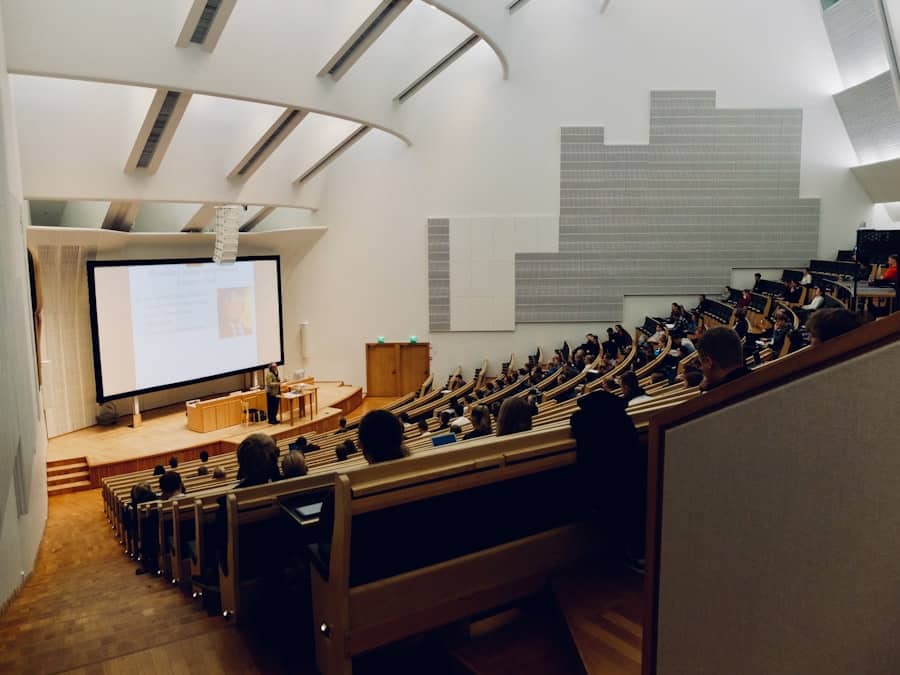The advent of AI-powered translation tools has revolutionized the landscape of language learning, providing learners with unprecedented access to resources and support. These tools, which utilize advanced algorithms and machine learning techniques, can translate text and speech in real-time, making it easier for students to engage with foreign languages. For instance, applications like Google Translate and DeepL have become integral to the language learning process, allowing users to quickly translate phrases, sentences, or entire documents.
This immediacy not only aids comprehension but also encourages learners to experiment with new vocabulary and grammatical structures without the fear of making mistakes. Moreover, AI translation tools have democratized language learning by breaking down geographical and economic barriers. Students in remote areas or those with limited access to traditional language education can now utilize these technologies to learn at their own pace.
The ability to translate educational materials into a learner’s native language fosters a more inclusive environment, enabling individuals from diverse backgrounds to participate in language acquisition. This shift is particularly significant in regions where educational resources are scarce, as AI tools can serve as a bridge, connecting learners with global knowledge and cultural insights that were previously out of reach.
Key Takeaways
- AI-powered translation tools can enhance language learning by providing accurate and instant translations, improving vocabulary and grammar skills.
- Language barriers in the classroom can be broken down with the help of AI-powered translation tools, allowing for better communication and understanding among students and teachers.
- AI plays a crucial role in making educational resources accessible to a global audience by translating content into multiple languages, reaching a wider and more diverse group of learners.
- AI-powered translation tools can enhance cross-cultural communication in education by facilitating the exchange of ideas and knowledge across different languages and cultures.
- The future of language education is being transformed by AI-powered translation tools, offering new opportunities for more efficient and effective language learning experiences.
Breaking Down Language Barriers in the Classroom
In the modern classroom, language barriers can hinder effective communication and collaboration among students and educators. AI-powered translation tools are instrumental in dismantling these obstacles, facilitating a more inclusive learning environment. For example, teachers can use real-time translation applications during lessons to ensure that all students, regardless of their linguistic background, can grasp the material being presented.
This capability not only enhances understanding but also fosters a sense of belonging among students who might otherwise feel marginalized due to language differences. Furthermore, these tools enable collaborative projects that involve students from different linguistic backgrounds. Imagine a classroom where native speakers of Spanish, Mandarin, and English work together on a science project.
With AI translation tools at their disposal, they can communicate seamlessly, sharing ideas and insights without the limitations imposed by language differences. This collaborative spirit not only enriches the educational experience but also prepares students for a globalized world where cross-cultural communication is essential.
The Role of AI in Making Educational Resources Accessible to a Global Audience
AI technology plays a pivotal role in making educational resources accessible to learners worldwide. By translating textbooks, online courses, and instructional videos into multiple languages, AI-powered tools ensure that high-quality educational content is available to non-native speakers. For instance, platforms like Coursera and edX have begun incorporating AI translation features that allow users to access courses in their preferred language.
This accessibility is crucial for learners who may not have the opportunity to study in English or other dominant languages. Additionally, AI can enhance the localization of educational materials, adapting content not only linguistically but also culturally. This means that examples, idioms, and references can be tailored to resonate with diverse audiences.
For example, a history lesson about the American Civil War might be adapted for students in Brazil by drawing parallels to their own historical struggles for independence. Such culturally relevant adaptations foster deeper engagement and understanding among learners, making education more meaningful and impactful.
Enhancing Cross-Cultural Communication in Education
Cross-cultural communication is an essential skill in today’s interconnected world, and AI-powered translation tools are enhancing this aspect of education significantly. By enabling students to communicate with peers from different cultural backgrounds, these tools promote empathy and understanding. For instance, language exchange programs that utilize AI translation can facilitate conversations between students from different countries, allowing them to share their experiences and perspectives in real-time.
This interaction not only improves language skills but also cultivates a sense of global citizenship. Moreover, educators can leverage AI translation tools to incorporate diverse perspectives into their curricula. By accessing literature, research articles, and case studies from various cultures, teachers can provide students with a more comprehensive understanding of global issues.
For example, a discussion on climate change could include viewpoints from indigenous communities around the world, highlighting their unique challenges and solutions. This approach not only enriches the learning experience but also encourages students to think critically about the complexities of global issues.
The Future of Language Education with AI-Powered Translation Tools
As technology continues to evolve, the future of language education is poised for transformation through AI-powered translation tools. These advancements promise to create more personalized learning experiences tailored to individual needs. For instance, adaptive learning platforms could analyze a student’s progress and provide targeted translations or explanations based on their specific challenges.
This level of customization could significantly enhance language acquisition by addressing gaps in knowledge more effectively than traditional methods. Furthermore, the integration of AI in language education may lead to the development of immersive learning environments. Virtual reality (VR) and augmented reality (AR) technologies could combine with AI translation tools to create interactive scenarios where learners practice their language skills in realistic contexts.
Imagine a student donning a VR headset and navigating a virtual marketplace in Paris while receiving real-time translations of signs and conversations around them. Such experiences would not only bolster language proficiency but also instill confidence in using the language in real-world situations.
Overcoming Language Challenges in International Collaboration and Research
In an increasingly globalized academic landscape, international collaboration is essential for advancing research and innovation. However, language challenges often impede effective communication among researchers from different linguistic backgrounds. AI-powered translation tools are emerging as vital resources in overcoming these barriers.
By providing accurate translations of research papers, grant proposals, and collaborative communications, these tools facilitate smoother interactions between scholars worldwide. For example, consider a multinational research team working on climate change solutions. Researchers from various countries may have differing levels of proficiency in English or other dominant languages used in academia.
With AI translation tools at their disposal, they can share findings and insights without the fear of miscommunication or misunderstanding due to language differences. This enhanced collaboration not only accelerates the pace of research but also fosters a more inclusive academic environment where diverse voices contribute to global challenges.
Leveraging AI for Multilingual Instruction and Assessment
The integration of AI-powered translation tools into multilingual instruction represents a significant advancement in educational practices. Educators can utilize these tools to create instructional materials that cater to diverse linguistic backgrounds within their classrooms.
This approach promotes equity in education by leveling the playing field for learners who may struggle with language barriers. In addition to instruction, AI translation tools can enhance assessment practices by providing multilingual testing options. Students can take exams or complete assignments in their preferred language while still demonstrating their understanding of the subject matter.
This flexibility not only reduces anxiety for non-native speakers but also allows educators to assess knowledge more accurately without the confounding factor of language proficiency. As a result, assessments become more reflective of a student’s true capabilities rather than their linguistic limitations.
Addressing the Ethical and Cultural Implications of AI-Powered Translation in Education
While AI-powered translation tools offer numerous benefits for language learning and education, they also raise important ethical and cultural considerations that must be addressed. One significant concern is the potential for inaccuracies in translation that could lead to misunderstandings or misrepresentations of cultural nuances. For instance, idiomatic expressions or culturally specific references may not translate effectively, resulting in loss of meaning or context.
Additionally, there is a risk that reliance on AI translation tools could diminish the value placed on learning languages authentically. While these tools provide convenience and accessibility, they should not replace the fundamental skills associated with language acquisition—such as speaking, listening, reading, and writing—nor should they undermine the cultural richness embedded within languages.
Educators have a responsibility to strike a balance between leveraging technology for efficiency while fostering an appreciation for linguistic diversity and cultural heritage among students. In conclusion, as we navigate the complexities of integrating AI-powered translation tools into education, it is crucial to remain mindful of both their transformative potential and the ethical implications they entail. By fostering an environment that values both technological advancement and cultural understanding, we can harness the power of AI to enhance language learning while preserving the richness of human communication across cultures.
AI-powered translation tools are not only revolutionizing education but also impacting various industries. In fact, according to a recent article on enicomp.com, AI technology is also shaping the future of social media platforms like TikTok. As technology continues to advance, it is crucial for individuals to stay informed about the latest trends and tools available. Whether it’s finding the best laptop for remote work or exploring the top software testing books, staying up-to-date on technological advancements is essential in today’s fast-paced world.
FAQs
What are AI-powered translation tools?
AI-powered translation tools are software applications that use artificial intelligence and machine learning algorithms to translate text or speech from one language to another. These tools are designed to improve accuracy and efficiency in language translation.
How are AI-powered translation tools making education more global?
AI-powered translation tools are making education more global by breaking down language barriers and enabling students and educators to access educational resources in different languages. These tools facilitate communication and collaboration among students and educators from diverse linguistic backgrounds, thus promoting a more inclusive and global learning environment.
What are the benefits of using AI-powered translation tools in education?
Some benefits of using AI-powered translation tools in education include:
– Facilitating access to educational resources in different languages
– Promoting cross-cultural communication and collaboration
– Enhancing the learning experience for students with limited proficiency in the language of instruction
– Supporting the integration of diverse perspectives and knowledge in the educational setting
What are some popular AI-powered translation tools used in education?
Some popular AI-powered translation tools used in education include Google Translate, Microsoft Translator, and DeepL. These tools offer a wide range of language translation capabilities and are commonly used by students, educators, and educational institutions around the world.



